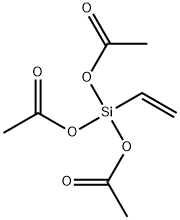Sodium triacetoxyborohydride
Synonym(s):STAB
- CAS NO.:56553-60-7
- Empirical Formula: C6H10BNaO6
- Molecular Weight: 211.94
- MDL number: MFCD00012211
- EINECS: 435-580-8
- SAFETY DATA SHEET (SDS)
- Update Date: 2025-09-25 17:15:13

What is Sodium triacetoxyborohydride?
Description
Sodium triacetoxyborohydride (STAB) is a mild reducing agent that is commonly used in reductive aminations. STAB has the advantage over sodium cyanoborohydride (NaBH3CN) of not producing toxic side-pdts. One disadvantage of STAB is that it is H2O sensitive, not compatible with MeOH, and reacts slowly with EtOH and isopropanol. For these reasons STAB is typically used with aprotic solvents such as DCE, DCM, THF, dioxane, or toluene.
Chemical properties
Sodium triacetoxyborohydride (STAB-H) is commercially available as a hygroscopic white powder with a melting point of 116-120 °C. freely soluble in benzene. It is prepared by the reaction of NaBH4 with excess acetic acid in benzene or toluene.
The Uses of Sodium triacetoxyborohydride

A slurry of the amine (50 mg, 0.12 mmol) and the aldehyde (31.6 mg, 0.18 mmol) in 1,4-Dioxane (3 mL) was stirred for 5 min then treated with NaBH(OAc)3 (77 mg, 0.363 mmol). After stirring 10 min, DCM was added to the reaction mixture. The resulting solution was washed with saturated aq NaHCO3, water, and brine. The organics were dried (MgSO4) and concentrated in vacuo to provide the product which was used in the next step without further purification.
The Uses of Sodium triacetoxyborohydride
Sodium Triacetoxyborohydride(STAB) is a hydride reagent used in stereoselective reductive amination. It is able to replace toxic sodium cyanoborohydride under most conditions. It is selective in reducing aldehydes to alcohols in the presence of ketones. STAB is also stable in anhydrous acids, which enables reductive amination of aldehydes and ketones. It used in reductive amination of ketones and aldehydes and reductive amination/lactamization of carbonyl compounds with amines. The advantage of STAB compared to sodium cyanoborohydride is evident. STAB, being non-toxic, is easier to handle and forms no toxic by-products, making the treatment of process waste after the reaction simple and less costly.
What are the applications of Application
Sodium triacetoxyborohydride is a reagent used for reductive amination of carbonyl compounds with amines
What are the applications of Application
Sodium triacetoxyborohydride is a mild reagent that exhibits remarkable selectivity as a reducing agent. It reduces aldehydes but not ketones; however, beta-hydroxyketones can be reduced selectively to give 1,3-trans diols.The steric and the electron-withdrawing effects of the three acetoxy groups stabilize the boron-hydrogen bond and are responsible for its mild reducing properties.
Sodium triacetoxyborohydride or [NaBH(OAc)3] can be used as a reagent:
In the reductive amination of ketones and aldehydes.
To prepare N-benzyl-γ-valerolactam by reacting with methyl 4-oxopentanoate and benzylamine via reductive amination/lactamization.
To reduce imines and enamines to corresponding amines.
To reduce quinolines and isoquinolines to corresponding tetrahydro derivatives.
In the hydroboration of alkenes.
To synthesize nitroxide biradicals for creating high relaxivity terminal groups linkage to dendrimers.
Reactions
Sodium Triacetoxyborohydride is selective reducing agent in organic synthesis. It is especially suitable for reductive aminations. Since the reaction rate for the reduction of iminium ions is much faster than for ketones or even aldehydes, the reductive amination can be carried out as a one-pot procedure by introducing the reducing agent into a mixture of the amine and carbonyl compound. The presence of a stoichiometric amount of acetic acid, which catalyzes the imine formation and provides the iminium ion, doesn't present any problem under these conditions.
Reductive amination (simplified)
Preparation
Sodium triacetoxyborohydride can be prepared by protonolysis of sodium borohydride with acetic acid:
NaBH4 + 3 HO2CCH3 → NaBH(O2CCH3)3 + 3 H.
Properties of Sodium triacetoxyborohydride
| Melting point: | 116-120 °C (dec.) (lit.) |
| Boiling point: | 111.1℃[at 101 325 Pa] |
| Density | 1.36[at 20℃] |
| vapor pressure | 0Pa at 25℃ |
| storage temp. | Inert atmosphere,Room Temperature |
| solubility | Soluble in dimethyl sulfoxide, methanol, benzene, toluene, terahydrofuran, dioxane and methylene chloride. |
| form | Powder |
| appearance | White powder |
| color | White |
| Water Solubility | reacts |
| Sensitive | Moisture Sensitive |
| Merck | 14,8695 |
| BRN | 4047608 |
| CAS DataBase Reference | 56553-60-7(CAS DataBase Reference) |
| EPA Substance Registry System | Borate(1-), tris(acetato-.kappa.O)hydro-, sodium, (T-4)- (56553-60-7) |
Safety information for Sodium triacetoxyborohydride
| Signal word | Danger |
| Pictogram(s) |
 Flame Flammables GHS02  Corrosion Corrosives GHS05  Exclamation Mark Irritant GHS07  Health Hazard GHS08 |
| GHS Hazard Statements |
H228:Flammable solids H260:Substances And Mixtures Which, In Contact With Water,Emit Flammable Gases H302:Acute toxicity,oral H318:Serious eye damage/eye irritation |
| Precautionary Statement Codes |
P210:Keep away from heat/sparks/open flames/hot surfaces. — No smoking. P280:Wear protective gloves/protective clothing/eye protection/face protection. P231+P232:Handle under inert gas. Protect from moisture. P301+P312:IF SWALLOWED: call a POISON CENTER or doctor/physician IF you feel unwell. P305+P351+P338:IF IN EYES: Rinse cautiously with water for several minutes. Remove contact lenses, if present and easy to do. Continuerinsing. P308+P313:IF exposed or concerned: Get medical advice/attention. |
Computed Descriptors for Sodium triacetoxyborohydride
| InChIKey | HHYFEYBWNZJVFQ-UHFFFAOYSA-N |
Sodium triacetoxyborohydride manufacturer
JSK Chemicals
Sainor Laboratories Pvt Ltd Unit III
ASM Organics
New Products
4,4-Difluoropiperidine hydrochloride tert-butyl 9-methoxy-3-azaspiro[5.5]undecane-3-carboxylate Indole Methyl Resin N-Isopropylurea N,N-Dicyclohexylcarbodiimide(DCC) MELDRUMS ACID 5-METHYLISOXAZOLE-4-CARBOXYLIC ACID Magnessium Bis glycinate Zinc ascorbate 1-bromo-2-butyne 2-acetamidophenol 9(10H)-anthracenone Erythrosin B, 4-Piperidinopiperidine 2-((4-morpholinophenylamino) (methylthio) methylene) malononitrile 2,4-dihydroxybenzaldehyde 3-(4-morpholinophenylamino)-5-amino-1H-pyrazole-4-carbonitrile Methyl 2-methylquinoline-6-carboxylate 2,6-dichloro-4-nitropyridine 4-Bromo-2-chlorobenzonitrile 2-(benzylamino)acetic acid hydrochloride 4-(tert-Butoxycarbonylamino)but- 2-ynoic acid 3,4-dihydro-2H-benzo[b][1,4]dioxepine 1-Phenyl-1-cycloprppanecarboxylicacidRelated products of tetrahydrofuran








You may like
-
 56553-60-7 98%View Details
56553-60-7 98%View Details
56553-60-7 -
 Sodium triacetoxyborohydride CAS 56553-60-7View Details
Sodium triacetoxyborohydride CAS 56553-60-7View Details
56553-60-7 -
 Sodium Triacetoxyborohydride CAS 56553-60-7View Details
Sodium Triacetoxyborohydride CAS 56553-60-7View Details
56553-60-7 -
 Sodium Triacetoxyborohydride (STAB) pure CAS 56553-60-7View Details
Sodium Triacetoxyborohydride (STAB) pure CAS 56553-60-7View Details
56553-60-7 -
 Sodium triacetoxyborohydride 97% CAS 56553-60-7View Details
Sodium triacetoxyborohydride 97% CAS 56553-60-7View Details
56553-60-7 -
 SODIUM TRIACETOXYBOROHYDRIDE CASView Details
SODIUM TRIACETOXYBOROHYDRIDE CASView Details -
 25KG/50KG Sodium Triacetoxyborohydride,56553-60-7, LiquidView Details
25KG/50KG Sodium Triacetoxyborohydride,56553-60-7, LiquidView Details
56553-60-7 -
 Sodium Triacetoxyborohydride ,56553-60-7View Details
Sodium Triacetoxyborohydride ,56553-60-7View Details
56553-60-7
